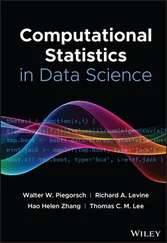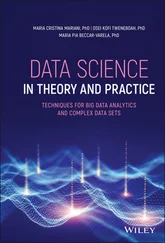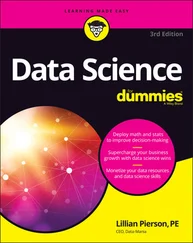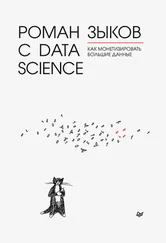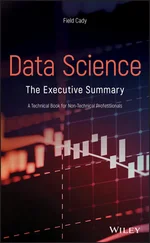1 Cover
2 About the Authors About the Authors Neal Fishman is an IBM Distinguished Engineer and is the CTO for Data-Based Pathology within IBM's Global Business Services organization. Neal is also an Open Group Certified Distinguished IT Architect. Neal has extensive experience working with IBM's clients across six continents on complex data and AI initiatives. Neal has previously served as a board member for several different industry communities and was the technology editor for the BRCommunity webzine. Neal has been a distance learning instructor with the University of Washington and has recorded some of his other insights in Viral Data in SOA: An Enterprise Pandemic and Enterprise Architecture Using the Zachman Framework . Neal also holds several data-related patents. You can connect with Neal on LinkedIn at linkedin.com/in/neal-fishman- . Cole Stryker is an author and journalist based in Los Angeles. He is the author of Epic Win for Anonymous , the story of a global gang of hackers and trolls who took on big corporations and governments, and Hacking the Future , which charts the history of anonymity and makes a case for its future as a form of cultural and political expression. His writing has appeared in Newsweek, The Nation, NBC News, Salon, Vice, Boing Boing, The NY Observer, The Huffington Post, and elsewhere. You can connect with Cole on LinkedIn at linkedin.com/in/colestryker .
3 Acknowledgments Acknowledgments I want to express my sincere gratitude to Jim Minatel at John Wiley & Sons for giving me this opportunity. I would also like to sincerely thank my editor, Tom Dinse, for his attention to detail and for his excellent suggestions in helping to improve this book. I am very appreciative of the input provided by Tarik El-Masri, Alex Baryudin, and Elis Gitin. I would also like to thank Matt Holt, Devon Lewis, Pete Gaughan, Kenyon Brown, Kathleen Wisor, Barath Kumar Rajasekaran, Steven Stansel, Josephine Schweiloch, and Betsy Schaefer. During my career, there have been several notable giants with whom I have worked and upon whose shoulders I clearly stand. Without these people, my career would not have taken the right turns: John Zachman, Warren Selkow, Ronald Ross, David Hay, and the late John Hall. I would like to recognize the renowned Grady Booch for his graciousness and kindness to contribute the Foreword. Finally, I would like to acknowledge the efforts of Cole Stryker for helping take this book to the next level. Neal Fishman Thanks to Jim Minatel, Tom Dinse, and the rest of the team at Wiley for recognizing the need for this book and for enhancing its value with their editorial guidance. I'd also like to thank Elizabeth Schaefer for introducing me to Neal and giving me the opportunity to work with him. Thanks also to Jason Oberholtzer and the folks at Gather for enabling my work at IBM. Lastly, I'm grateful to Neal Fishman for sharing his vision and inviting me to contribute to this important book. Cole Stryker
4 Foreword for Smarter Data Science Foreword for Smarter Data Science There have been remarkable advances in artificial intelligence the past decade, owing to a perfect storm at the confluence of three important forces: the rise of big data, the exponential growth of computational power, and the discovery of key algorithms for deep learning. IBM's Deep Blue beat the world's best chess player, Watson bested every human on Jeopardy , and DeepMind's AlphaGo and AlphaZero have dominated the field of Go and videogames. On the one hand, these advances have proven useful in commerce and in science: AI has found an important role in manufacturing, banking, and medicine, to name a few domains. On the other hand, these advances raise some difficult questions, especially with regard to privacy and the conduct of war. While discoveries in the science of artificial intelligence continue, the fruits of that science are now being put to work in the enterprise in very tangible ways, ways that are not only economically interesting but that also contribute to the human condition. As such, enterprises that want to leverage AI must turn their focus to engineering pragmatic systems of value that contain cognitive components. That's where Smarter Data Science comes in. As the authors explain, data is not an afterthought in building such systems; it is a forethought. To leverage AI for predicting, automating, and optimizing enterprise outcomes, the science of data must be made an intentional, measurable, repeatable, and agile part of the development pipeline. Here, you'll learn about best practices for collecting, organizing, analyzing, and infusing data in ways that make AI real for the enterprise. What I celebrate most about this book is that not only are the authors able to explain these best practices from a foundation of deep experience, they do so in a manner that is actionable. Their emphasis on results-driven methodology that is agile yet enables a strong architectural framework is refreshing. I'm not a data scientist; I'm a systems engineer, and increasingly I find myself working with data scientists. Believe me, this is a book that has taught me many things. I think you'll find it quite informative as well. Grady Booch ACM, IEEE, and IBM Fellow
5 Epigraph Epigraph “There is no AI without IA.” Seth Earley IT Professional, vol. 18, no. 03, 2016. ( info.earley.com/hubfs/EIS_Assets/ITPro-Reprint-No-AI-without-IA.pdf ) In 2016, IT consultant and CEO Seth Earley wrote an article titled “There is no AI without IA” in an IEEE magazine called IT Professional . Earley put forth an argument that enterprises seeking to fully capitalize on the capabilities of artificial intelligence must first build out a supporting information architecture. Smarter Data Science provides a comprehensive response: an IA for AI.
6 Preamble Preamble “What I'm trying to do is deliver results.” Lou Gerstner Business Week
Why You Need This Book What You'll Learn
7 CHAPTER 1: Climbing the AI Ladder Readying Data for AI Technology Focus Areas Taking the Ladder Rung by Rung Constantly Adapt to Retain Organizational Relevance Data-Based Reasoning Is Part and Parcel in the Modern Business Toward the AI-Centric Organization Summary
8 CHAPTER 2: Framing Part I: Considerations for Organizations Using AI Data-Driven Decision-Making Democratizing Data and Data Science Aye, a Prerequisite: Organizing Data Must Be a Forethought Facilitating the Winds of Change: How Organized Data Facilitates Reaction Time Quae Quaestio (Question Everything) Summary
9 CHAPTER 3: Framing Part II: Considerations for Working with Data and AI Personalizing the Data Experience for Every User Context Counts: Choosing the Right Way to Display Data Ethnography: Improving Understanding Through Specialized Data Data Governance and Data Quality Ontologies: A Means for Encapsulating Knowledge Fairness, Trust, and Transparency in AI Outcomes Accessible, Accurate, Curated, and Organized Summary
10 CHAPTER 4: A Look Back on Analytics: More Than One Hammer Been Here Before: Reviewing the Enterprise Data Warehouse Drawbacks of the Traditional Data Warehouse Paradigm Shift Modern Analytical Environments: The Data Lake Elements of the Data Lake The New Normal: Big Data Is Now Normal Data Schema-on-Read vs. Schema-on-Write Summary
11 CHAPTER 5: A Look Forward on Analytics: Not Everything Can Be a Nail A Need for Organization Data Topologies Expanding, Adding, Moving, and Removing Zones Enabling the Zones Summary
12 CHAPTER 6: Addressing Operational Disciplines on the AI Ladder A Passage of Time Create Execute Operate The xOps Trifecta: DevOps/MLOps, DataOps, and AIOps Summary
13 CHAPTER 7: Maximizing the Use of Your Data: Being Value Driven Toward a Value Chain Curation Data Governance Integrated Data Management Summary
Читать дальше
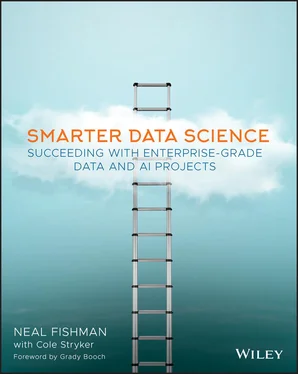

![Роман Зыков - Роман с Data Science. Как монетизировать большие данные [litres]](/books/438007/roman-zykov-roman-s-data-science-kak-monetizirova-thumb.webp)

